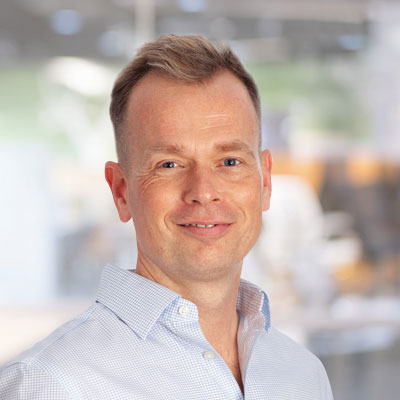When supply chain pressure becomes supply chain progress: A manufacturing transformation story
24 Sep 2025
Blog

This blog covers:
- Why the 'pressure cooker' environment can slow down and even prevent effective problem-solving in supply chains
- How systematic focused methodology beats quick fixes when transforming manufacturing operations
- The logical sequence that turns supply chain chaos into award-winning performance
It is another Monday morning from hell. The operations director stares at his latest report, showing service levels plummeting while inventory and costs continue to soar. Customer complaints are flooding in, the finance team is demanding answers, and his third emergency meeting of the day is about to start – and it’s only 8.45am.
For most supply chain professionals, this scenario represents the grinding reality of modern manufacturing. You're caught between impossible demands: deliver perfect service with minimal inventory, slash costs while maintaining quality, and somehow find time for strategic thinking between endless firefighting sessions and meetings.
The pressure cooker reality
We recently worked with a mid-sized manufacturer – let's call them Maximal Manufacturing PLC – who supply major UK retailers. Their story mirrors countless others we've encountered over the years. Despite everyone working flat out, the business was trapped in a cycle of perpetual crisis.
Service issues plagued customer relationships. Inventory levels had spiralled beyond acceptable limits, yet they constantly ran out of the products customers actually wanted. Working capital was tied up in all the wrong places. Margins were under constant pressure, and the workforce spent more time in meetings discussing problems than actually solving them.
The management team knew changes were needed, but the sheer scale of interconnected issues felt overwhelming. Where do you even start when everything seems broken?
This is what we call the 'pressure cooker' environment, where relentless business demands create a state of constant stress that prevents effective problem-solving. Teams become reactive rather than proactive, fighting symptoms rather than addressing root causes.
A breakthrough moment
The turning point for Maximal Manufacturing PLC came when the leadership team recognised that its problems weren't isolated issues requiring separate solutions. Instead, they were symptoms of fundamental gaps in their planning and control processes.
Rather than launching multiple improvement initiatives simultaneously – a common mistake that dilutes focus and resources – they took a systematic approach. They began with the foundation, establishing proper change management processes to guide their transformation journey.
This might sound obvious, but most organisations skip this crucial step. They jump straight into technical solutions without creating the organisational capability to sustain change. All too often this results in short-term improvements that quickly revert to old patterns.
Maximal Manufacturing PLC's leadership team then focused on understanding what their supply chain could actually deliver. This revealed a worrying truth: they'd been making promises to customers based on wishful thinking rather than realistic capacity assessments.
From chaos to control
The transformation didn't happen overnight, but the methodology was surprisingly logical once they grasped the sequence. Each step built upon the previous one, creating momentum that energised the entire organisation.
Initially, they tackled their planning assumptions. Like many manufacturers, they'd been using ineffective methods that bore little resemblance to operational reality. Moving to demonstrated performance principles – using actual historical data rather than theoretical capabilities – immediately improved their planning accuracy.
However, better plans alone weren't sufficient. They needed systematic ways to identify when things went wrong and why. This led to establishing measurement hierarchies and formal root cause analysis processes. For the first time, problems could be traced to their source rather than being masked by frantic workarounds.
The real breakthrough came when they cleaned up their data. Years of quick fixes and manual overrides had corrupted their systems. Once they restored data integrity, their planning tools could function as designed rather than fighting against garbage inputs.
Perhaps most importantly, they established daily and weekly rhythms for managing change. Instead of monthly crisis meetings where problems had already escalated, they created focused sessions that caught issues early and addressed them systematically.
Vast improvements
Twelve months later, Maximal Manufacturing PLC had transformed their operation. Inventory levels dropped by 30% while service performance improved dramatically. Costs fell by 25% as efficiency improvements eliminated waste and rework. Most tellingly, their workforce reported significantly better work-life balance as firefighting gave way to proactive management.
The company went on to win supplier of the year awards from major retail customers – recognition that would have seemed impossible during their crisis period. More importantly, they'd developed the capability to sustain these improvements rather than sliding back into old patterns.
The methodology behind the transformation
The Maximal Manufacturing PLC story illustrates how sustainable supply chain improvement requires systematic methodology, not quick fixes or technology solutions alone. Each stage of their journey built capabilities that enabled the next phase of development.
This isn't about revolutionary new concepts. The principles of effective planning and control have been well-established for decades. What made the difference was applying them in the right sequence with proper change management support.
The challenge most organisations face isn't knowing what to do, but where to start and how to sequence improvements for maximum impact. They become overwhelmed by the apparent complexity and either delay action or launch unfocused initiatives that deliver disappointing results.
Your transformation journey
If the Maximal Manufacturing PLC story resonates with your experience, you're far from alone. The pressures facing modern supply chains are intensifying, but so are the opportunities for organisations that respond systematically rather than reactively.
The methodology that transformed Maximal Manufacturing PLC from crisis to award-winning performance can be applied across different industries and company sizes. The key lies in understanding the logical sequence of improvements and maintaining focus throughout the transformation process.
Are you ready to commit to the systematic approach that makes transformation possible?
We will share the complete Maximal Manufacturing PLC transformation story, including detailed methodology and implementation insights, in our upcoming virtual workshop, 'Transforming Supply Chain Pressure into Progress', on October 24, 2025. The half-day session provides practical guidance for anyone involved in the supply chain who wants to move from firefighting to a strategic advantage. Book your place today.
Author(s)
-

-
